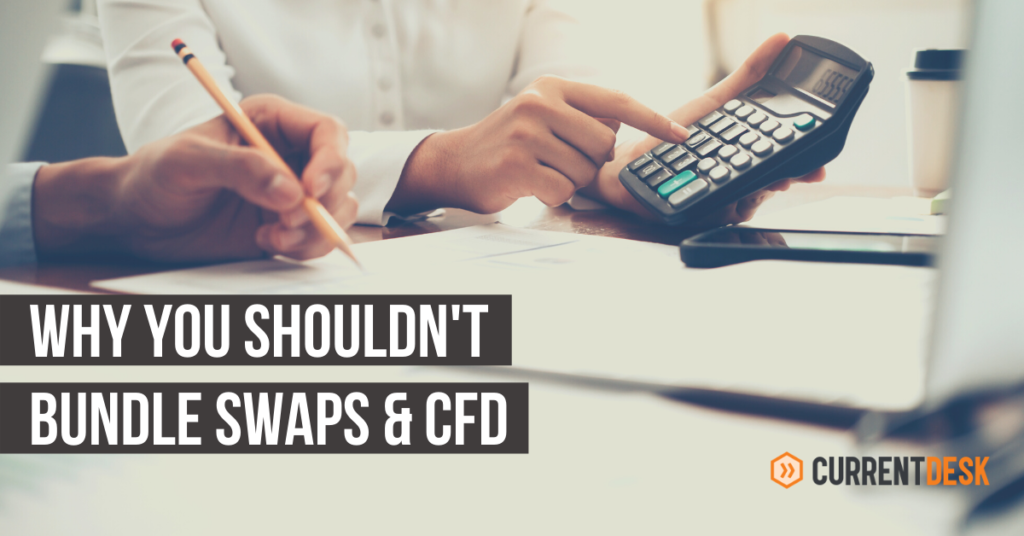Why you shouldn’t use swaps to pay CFD dividends

If your brokerage offers contract-for-difference (CFD) trading, then you will need to issue debits and credits for dividend payouts.
As the CFD market has become more popular, we’ve seen many brokers try to pay and charge dividends in the same way that they pay and charge swaps.
But it’s important to have a special tool to handle dividends and not bundle them up with other costs such as swaps, because swaps and dividends aren’t the same. If you treat them the same way, you can experience several problems.
Instead, you need software that can process and record dividends properly. The right software will credit the dividend adjustment to clients’ accounts for long positions and debit it from their accounts for short positions on the payment date.
Swaps vs. CFD dividends
CFD dividends and swaps are entirely different, and you should keep the differences in mind when you’re deciding how to process payments and charges for dividends.
Fund sources and cadence
Swaps and CFD dividends represent two completely different sources of funds.
Swaps are paid or charged when clients hold open positions overnight, and they reflect currency rate differentials on those positions.
CFD dividend credits and debits are issued as a result of a corporate action initiated by the company associated with the underlying assets.
Your firm will pay or charge swaps on a regular basis since interest accrues every night, but you won’t make dividend adjustments unless a dividend is paid for the CFD’s underlying assets.
Problems with dividend payouts
It may seem easier to simply pay or charge clients a dividend adjustment in the same way that you pay and charge swaps. However, this can lead to serious problems for your brokerage and your clients.
Taxable revenue
CFD dividends are taxable, and clients must pay tax at the source for dividend earnings. However, international clients can reclaim the taxes.
If you bundle swaps and CFD dividends together, clients won’t be able to reclaim the taxes because they won’t have the necessary documentation. When swap and dividend payments are processed in the same way, there is no reporting that demonstrates what was earned from the dividend and what was paid in taxes.
To help your brokerage stand out against competitors, you need to process dividend credits and debits as such, and you need to make reports that show profits, losses, and taxes easy to access.
Incorrect debits and credits
Dividend payments involve three important dates — the ex-date, when a client opened the position; the record date, on which the client had to hold the position; and the pay date, when the dividend is issued.
If you don’t calculate the ex-date, record date, and pay date, you might be overpaying dividends or overcharging on short positions. Overcharging could make you subject to legal action from clients who get short-changed.
Swaps are simply paid for holding a position overnight at a certain date. If you attempt to bundle your payments for dividends with those for swaps, you won’t be recording all the necessary information.
Administrative fees
Your brokerage may wish to charge an administrative fee for processing dividends, but you need to record the source of revenue generated by those fees. If you bundle swaps and dividends together, it will be almost impossible to identify the revenue from dividend fees.
Failure to document and identify revenue is a tax violation. Additionally, If you cannot document all the ways that your brokerage earns money, it will make it harder for you to raise capital for expansions in the future.
CFD software for dividends
To prevent these problems, you need to handle dividend adjustments separately from swaps by using software with dividend capabilities, specifically including an ex-date, record date and pay date.
It should then be able to generate reports on each dividend adjustment that you make, including the size of the position the client held, the dividend amount paid or charged, the taxes withheld, and the fees charged.
Clients want a CFD provider that pays dividends quickly. Some CFD providers even advertise that they make dividend payments the same day that the dividend is issued, and they highlight that speed as a benefit of CFDs.
To compete with such CFD providers, you need to have a tool that will allow you to enter information in the back office system in advance of the pay date, so your brokerage can issue credits and debits automatically and on time
CFD trading is popular with many investors, and your brokerage can benefit from that popularity if you handle CFDs and dividends correctly. If you want to learn how CurrentDesk can help you manage CFD dividends for your clients, contact us.
Related Posts:


Comments are closed.